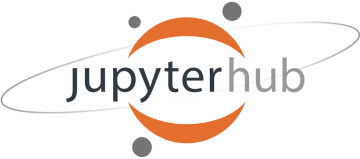JupyterHub in Teaching
The JupyterHub makes it possible to provide a programming environment for teaching with Jupyter notebooks that does not require time-consuming local installation and maintenance for users. Teachers and students can concentrate fully on the specific application (programming, data analyses, statistics) and tailor it to their subject-specific needs in terms of resources and programming environment.

The JupyterHub makes it possible to provide a programming environment with Jupyter notebooks for teaching purposes,
- without time-consuming local installation and maintenance for users,
- whose resources can be managed centrally by system administrators,
- which supports work in individual workspaces on shared resources,
- which offers a standardised user interface,
- which provides a standardised programming environment with the necessary programming libraries.
Teachers and students can concentrate fully on the specific application (programming, data analyses, statistics) and tailor it to their subject-specific needs in terms of resources and programming environment.
Jupyter Notebooks
-
- Files that are used in this programming interface
Jupyter File
- like interactive worksheets
- programmed code can be supplemented with many modules and presented in a visually appealing way
- E.g.: coloured boxes, table of contents, integration of graphics or videos
- Aim: acquisition of new learning content, consolidation or repetition
An empty Jupyter notebook:

Examples of the contents of a Jupyter notebook

